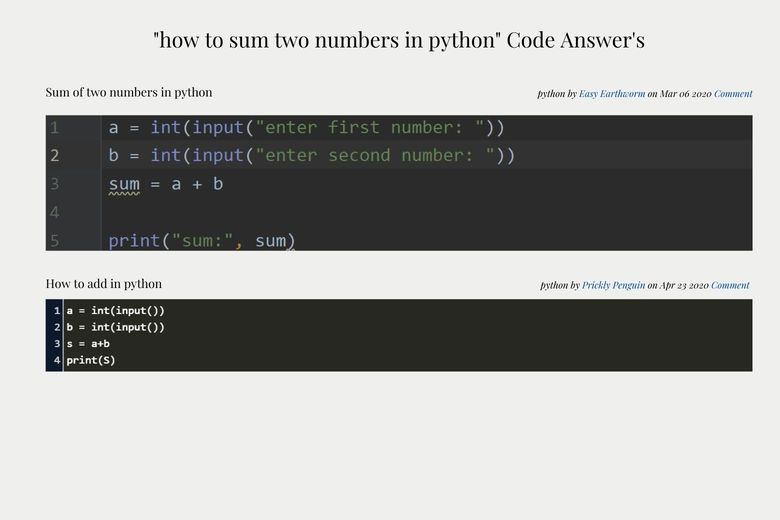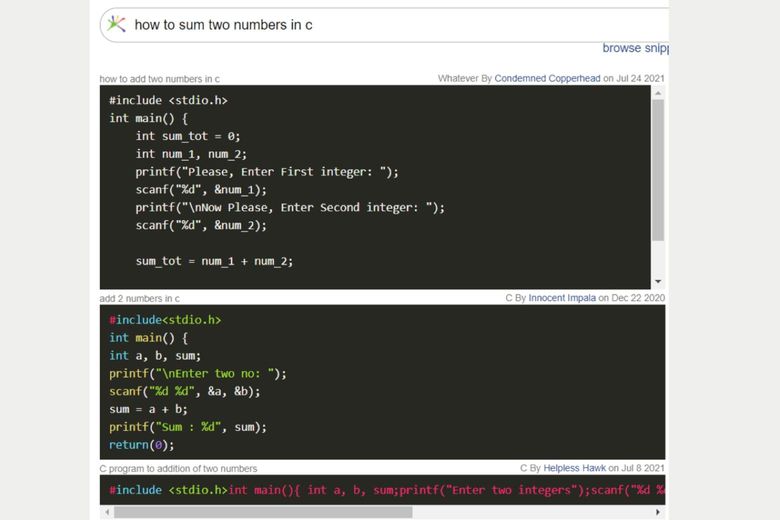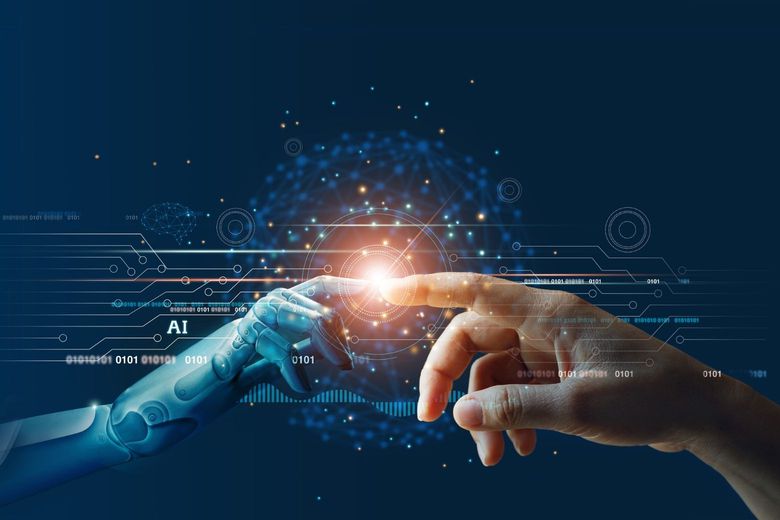
Jon Atkinson03/12/21
6 min read

Python has become one of the world’s go-to programming languages, loved by colossal companies and developers alike.
Used by Google, Instagram, NASA, Facebook, Netflix, Spotify, Intel, Pixar, Uber, Pinterest, Reddit and thousands more websites and projects, Python is snaking a path to digital dominance.
It’s loved for its complex simplicity; easy to code in while being powerful and versatile. The language of choice for data science and artificial intelligence, it’s also behind the acceleration of the Internet of Things.
While some programming languages have ceased to be, Python goes from strength to strength. So...what has Python ever done for us?
Arguably the biggest reason for Python’s popularity among developers is its low barrier to entry. It reads closer to plain English than any other language and it requires fewer lines of code.
Let’s look at an example: adding two numbers. In Python - the first image - a non-developer can follow the code.

In the C language, below, there’s just more code and you’re going to need a good understanding to follow it.

Because of the simple syntax, the advantage for clients is that code tends to be tidier, meaning problems are easier to fix and improvements easier to make. It also means that complex tasks are made more simple.
For these reasons, Python has been adopted by schools and colleges as the language of choice to introduce students to coding.
Inevitably, this means that the number of Python developers is increasing which, in turn, expands its growth and popularity.
But apart from it being easy to learn and simple to use, what has Python ever done for us?
Python has a thriving, active and supportive community - and this has a number of benefits for projects using the language.
An open-source language, it has harnessed a growing group of developers who are very proud of helping to advance what Python can do. As a result, it has an extensive set of libraries - more than 300,000 of them - which saves time at the beginning of development projects

Even for complex development, libraries have been created - for machine-learning applications, for example - and they come with full documentation due to the community’s pride in their work. Not many other languages can boast this kind of support.
Python was first seen in early 1991 - long before most of us accessed the worldwide web - and it simply would not have survived this long without its supportive community. That’s a good sign for any organisation using it.
It also means that guides and video tutorials are in abundance, and you’ll get answers to questions quickly. This is particularly important because it means projects aren’t held up by developers seeking solutions to problems.
While the community itself is hugely supportive, Python also benefits from being one of the go-to languages of some very big names.
Google uses Python for many of its applications and has invested time and money into its development. It even created a dedicated portal for the language.
Facebook and Amazon also support Python - along with other languages - and this corporate support only enhances its ongoing development.
All of these points have resulted in Python becoming the choice of code for a large number of programmers across the world - and that provides a snowball effect. Because it’s in high demand, the number of people learning it increases which, in turn, accelerates its development.
In 2020, Python was named by Tiobe as the language of the year - and it’s showing no sign of slowing down its progress.
But apart from it being easy to learn, simple to use, saving on development time, and improving constantly, what has Python ever done for us?

This versatility has resulted in Python being a go-to language for development for artificial intelligence and data science - two of the fastest-growing components of the digital revolution.
It has been adopted for data processing, organisation and research and development as well as the creation of eye-catching data visualisations.
Allied to this is the use of Python within machine-learning. Google uses it for its core search algorithm - which now heavily relies on artificial intelligence - as well as its main site for developers. An internal motto at Google is to use “Python where we can, C++ where we must”.
The small, specialist Raspberry Pi computer also uses Python to create practical applications under the umbrella of the Internet of Things.
The well-known Udemy teaching marketplace has a bootcamp course for learning data science and machine-learning with Python.
Another buzz term in the digital environment is automation, and once again Python thrives in this field thanks to its numerous tools and libraries. While other languages make automation complex, Python’s simplicity again comes to the fore, saving time and reducing the amount of code required.

Python is also known for its compatibility; it can be used alongside other languages. It’s happy to welcome others into its projects or be used as a selected guest.
But apart from it being easy to learn, simple to use, saving on development time, improving constantly, being versatile and used as the primary language across modern digital advancements...what has Python ever done for us?
Python is the shining star of the coding world right now and amongst its weaponry is simplicity, versatility, a supportive community and backing of big names.
All of this led to The Economist reporting: “Its straightforward syntax and use of indented spaces make it easy to learn, read and share … With such a rapidly growing user base and wide array of capabilities, Python might seem destined to become the lingua franca of coding, rendering all other competitors obsolete.”
As languages go, it’s as close as you’ll get to the holy grail for developers.